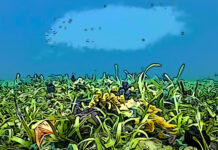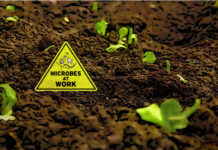Nature Restoration Law – the regulation for the restoration of natural ecosystems in the EU – was finally approved by the Council, June 17, 2024. Austrian Energy and Climate Minister Leonore Gewessler’s position in favor resulted in a qualified majority of member states. Despite votes against from Italy, Poland, Sweden, Finland, Hungary, and an abstention from Belgium.
The proposed regulation, as seen, encountered a long series of obstacles due to boycott attempts by the ‘European People’s Party’ (EPP), in the European Parliament, and the aforementioned national governments (1,2,3). All of which, as well, have drastically scaled back the objectives of an initiative aimed at ensuring the restoration of biodiversity and the resilience of agricultural systems in the Old Continent. (4) Some insights to follow.
Nature Restoration Law, targets and responsibilities of Member States
Member States will be required to submit to the Commission appropriate draft national plans that include measures to achieve binding restoration targets, in relation to:
– dry land and marine areas, with priority given to areas protected by Natura 2000, at least 20 percent by 2030
– habitats already protected by law that are now in a degraded condition. 30% by 2030, 60% by 2040, 90% by 2050
– peatlands, essential to carbon storage and biodiversity restoration, 30% by 2030, 40% by 2040, 50% by 2050
– all degraded ecosystems, by 2050. With commitment to maintain the ‘good condition’ status of various areas when it is achieved.
Biodiversity
The loss of biodiversity – which has been going on for decades, partly due to inadequate European policies and therefore already censured by the ‘European Court of Auditors’ (5) – must be mitigated. By 2030, member states must reverse the declining trend, with positive feedback on at least two of the three indicators to follow:
– presence of butterflies in grasslands (Grassland Butterfly Indicator)
– share of farmland with ‘high biodiversity’ landscape features
– stock of organic carbon in cropland.
Urban green spaces, forests, trees, rivers
Urban green spaces should not suffer a net loss, as of 2030 compared to 2021, and should be increased by 2050. Member States will therefore have to balance urban building expansion with the rehabilitation and maintenance of green areas. This is a far cry from the logic of halting land consumption everywhere, as an indispensable resource for preserving ecosystems and agriculture, called for by civil society. (6)
Forests and woods will in turn have to recover a positive trend by 2030. And the planting of at least three billion trees in the EU is also set as a binding target to be achieved by 2030. By the same deadline, member states must make at least 25,000 km of rivers navigable, removing anthropogenic barriers to surface water connectivity.
Dario Dongo
Footnotes
(1) Dario Dongo. Nature Restoration Law, European Parliament boycotts biodiversity restoration. FT (Food Times). 3.6.23
(2) Dario Dongo, Alessandra Mei. Nature Restoration Law, European Parliament approves proposal. FT (Food Times). 12.7.23
(3) Dario Dongo. Nature Restoration Law, pesticide reduction. MEPs at the service of agribusiness lobbies. FT (Food Times). 17.10.23
(4) Dario Dongo, Alessandra Mei. ‘Nature Restoration Law’, green light with downward deal. FT (Food Times). 6.11.23
(5) Dario Dongo, Marina De Nobili. CAP, pesticides and biodiversity. EU Court of Auditors report. FT (Food Times). 29.7.20
(6) See paragraph 2.D in Dario Dongo’s article. Peace, Land and Dignity. Our movement in the 2024 European elections. GIFT (Great Italian Food Trade). 14.3.24
Dario Dongo, lawyer and journalist, PhD in international food law, founder of WIISE (FARE - GIFT - Food Times) and Égalité.







